Grains & Feed
Mycotoxin Testing Solutions
Contaminants such as mycotoxins in grains and animal feed pose serious risks to both public health and agricultural productivity.
At ProGnosis Biotech, we deliver scientifically advanced, easy-to-use ELISA and Lateral Flow test kits that detect mycotoxins with exceptional speed and precision.
Our solutions are engineered to comply with international safety standards, promote sustainability through eco-friendly extractions and ensure transparency across your supply chain – from field to final product.

Why Choose ProGnosis Biotech?
Ultra-fast results
Eco-friendly testing
USDA Validated Accuracy
Advanced Android
Mobile App
Portable Readers
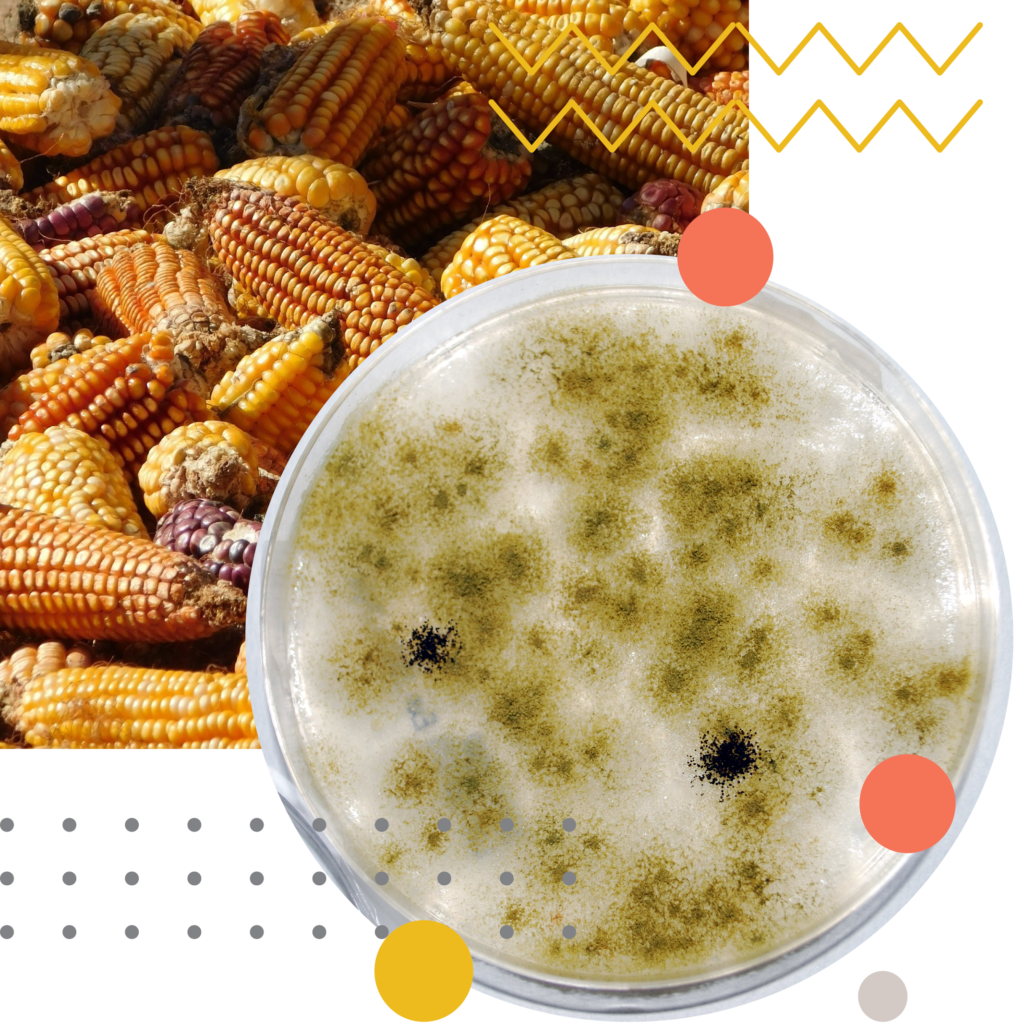
Aflatoxin B1 ________
Targeted Detection for Maximum Safety
Aflatoxin B1 is the most toxic member of the aflatoxin group and is classified by the IARC as a Group 1 carcinogen. Produced primarily by Aspergillus flavus and A. parasiticus, it frequently contaminates grains, oilseeds and nuts, leading to severe health consequences including liver cancer, growth retardation and immune dysfunction.
Fast and precise detection of Aflatoxin B1 is critical to ensuring food and feed safety, especially in high-risk commodities and export markets.
ELISA Kits:
- Bio-Shield B1 5 | 5-min ELISA
- Bio-Shield B1 OP | Wide quantification range
- Bio-Shield B1 ES | Ultra-low detection limits
- Bio-Shield B1 BF | Infant food safety compliance
- 1-Standard B1 | Cost-efficient one-standard ELISA
Lateral Flow Tests:
- Symmetric B1 Green | 3-min eco-friendly test, aqueous extraction solution
- Symmetric B1 ES | Highly sensitive, organic extraction solution
TOTAL AFLATOXIN ________
Comprehensive Screening for Safer Grains
Aflatoxins – including B1, B2, G1 and G2 – are among the most heavily regulated mycotoxins due to their potent hepatotoxic and carcinogenic effects.
These compounds thrive in warm, humid conditions and commonly contaminate grains, cereals and nuts. Ingestion can lead to chronic liver damage, immune suppression and reduced livestock productivity. Reliable, rapid detection is essential to ensure regulatory compliance and protect consumer health worldwide.
ELISA Kits:
- Bio-Shield TOTAL 5 | USDA-approved, 5-min ELISA
- Bio-Shield TOTAL OP | Wide quantification range
- Bio-Shield TOTAL ES | Trace-level detection
- 1-Standard Total | Cost-efficient one-standard ELISA
- 1-Standard Total Green | Cost-efficient ELISA- Green extraction
Lateral Flow Tests:
- Symmetric TOTAL Green 0-30 | Aqueous extraction solution, 3-min test
- Symmetric TOTAL ES | High-sensitivity, organic solvent extraction
- Quantum Total Green | Ultra-fast cassette format- USDA approved

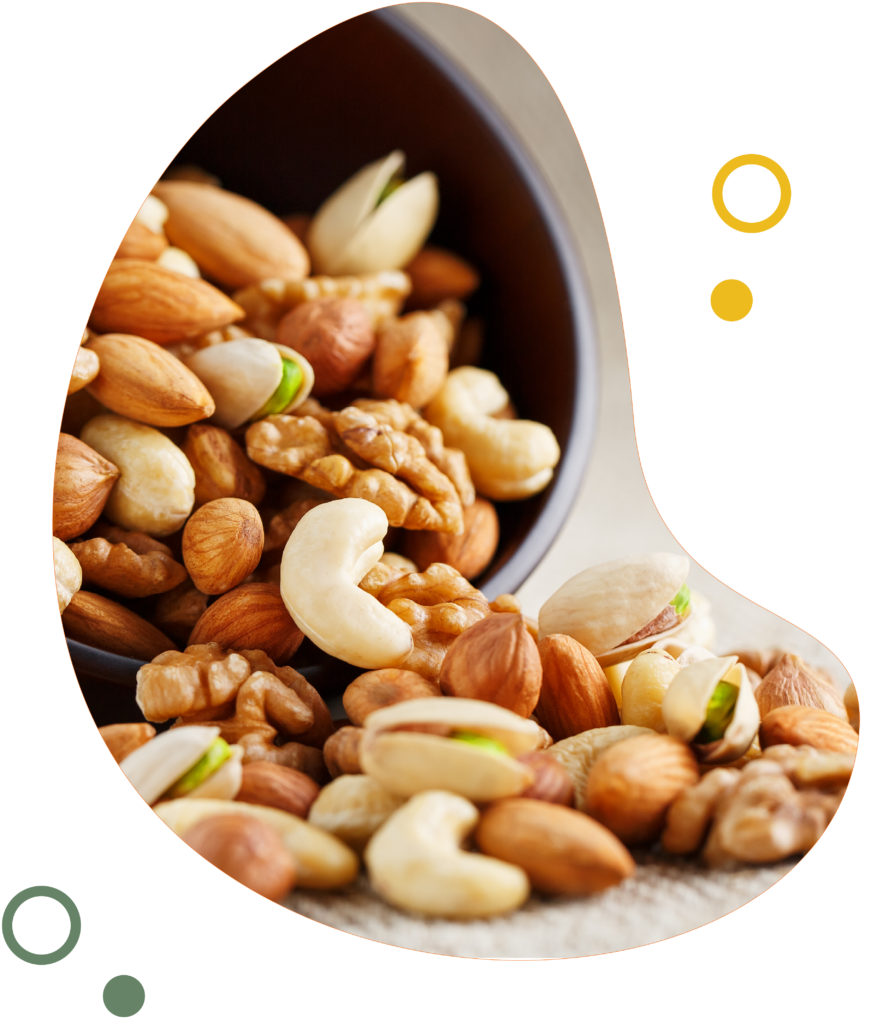
DEOXYNIVALENOL ________
Next-Level Testing for Reliable Food Safety
Deoxynivalenol (DON), also known as vomitoxin, is a trichothecene mycotoxin produced by Fusarium species and is frequently found in wheat, corn, barley, oats and rye. It can cause feed refusal, vomiting, immune suppression and poor weight gain in livestock.
In humans, high levels are linked to gastrointestinal symptoms and reduced immunity. Because of its prevalence and impact, DON monitoring is a regulatory priority for grain safety and livestock health.
ELISA Kits:
- Bio-Shield DON 5 | USDA-approved, 5-min ELISA
- Bio-Shield DON | Reliable DON detection
- Bio-Shield DON M.E. | Methanol extraction ELISA
- Bio-Shield DON 5 W.E. | Water extraction ELISA
- 1-Standard DON | Cost-efficient one-standard ELISA
- 1-Standard DON W.E. | Cost-efficient ELISA- Water extraction
Lateral Flow Tests:
- Symmetric DON Green | 3-min test, aqueous extraction solution
- Quantum DON Green | Ultra-fast, cassette format , USDA approved
- Quantum DON W.E. | Water extraction, cassette format , USDA approved
ZEARALENONE ________
Protect Feed Integrity
Zearalenone is a Fusarium-derived mycotoxin that mimics estrogen and primarily contaminates corn, wheat and barley.
It causes reproductive disorders, hormonal imbalances, and fertility issues in livestock – especially swine – leading to significant economic losses. Proactive ZON detection is essential for maintaining reproductive performance, animal welfare and regulatory compliance in the feed industry.
ELISA Kits:
- Bio-Shield ZON 5 | USDA-approved, 5-min ELISA
- Bio-Shield ZON | Variety of matrices-Sensitivity
- 1-Standard ZON | Cost-efficient one-standard ELISA
Lateral Flow Tests:
- Symmetric ZON Green | 3-min test, aqueous extraction solution
- Symmetric ZON ES | Organic extraction, for complex matrices
- Quantum ZON Green | Ultra-fast cassette format
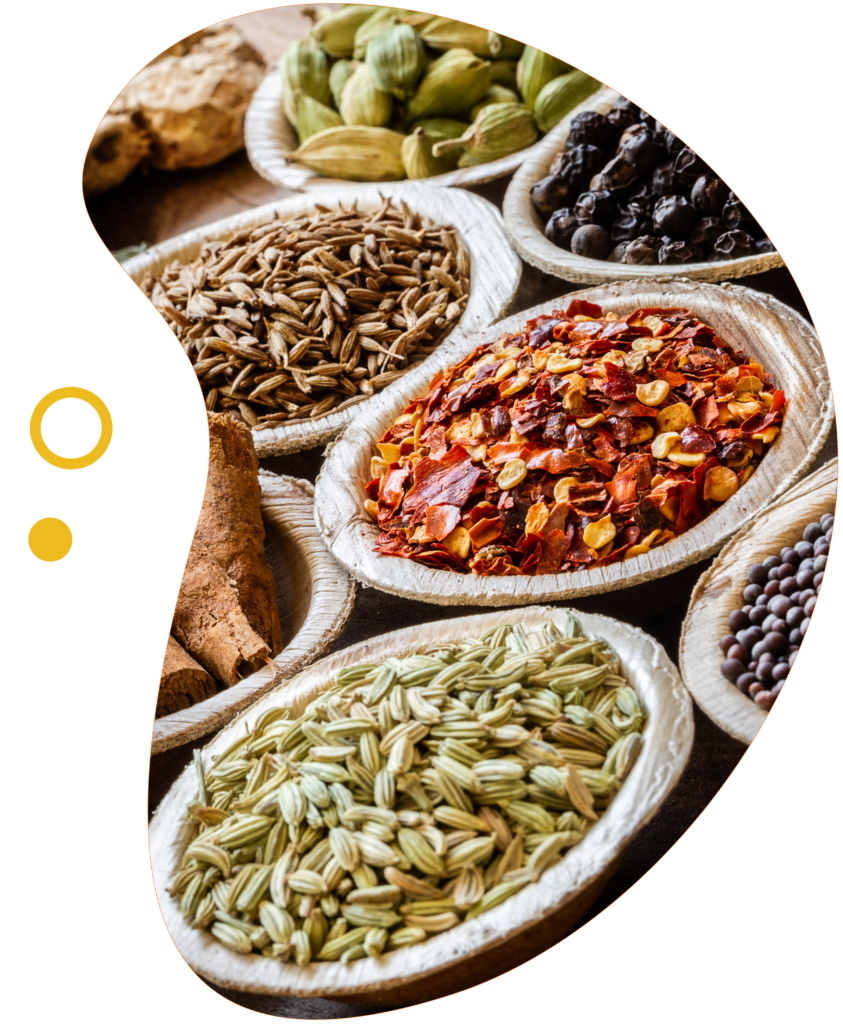

OCHRATOXIN ________
Stay Ahead of Risk
Ochratoxins, particularly Ochratoxin A (OTA), are produced by Aspergillus and Penicillium species and can be found in a wide range of products including grains, coffee, cocoa, dried fruits and wine. Ochratoxin A (OTA) is nephrotoxic, immunosuppressive and potentially carcinogenic, making it a major concern for public health.
Regular monitoring is crucial for meeting global MRLs and ensuring the safety of both human and animal food chains.
ELISA Kits:
- Bio-Shield Ochratoxin 8 | 8-min quantification
- Bio-Shield Ochratoxin | High-sensitivity detection
- 1-Standard Ochratoxin | Cost-efficient one-standard ELISA
Lateral Flow Tests:
- Symmetric Ochratoxin Green | 3-min test, aqueous extraction solution
- Symmetric Ochratoxin ES | 10-min test, organic extraction solution
- Symmetric Ochratoxin Coffee | Specialized 10-min coffee test
- Symmetric Ochratoxin Wine | Specialized 5-min wine test
- Quantum Ochratoxin Green | Ultra-fast cassette format
FUMONISIN ________
Stop Contamination Early
Fumonisins, especially FB1, FB2 and FB3, are produced by Fusarium verticillioides and F. proliferatum and are particularly prevalent in maize and corn-based products.
These toxins are linked to serious conditions including esophageal cancer, neural tube defects and leukoencephalomalacia in horses. Their economic and health impact makes early and accurate detection vital for ensuring safe trade and feed compliance.
ELISA Kits:
- Bio-Shield Fumonisin 5 | USDA-approved, 5-min test
- Bio-Shield Fumonisin | Sensitive, numerous matrices
- 1-Standard Fumonisin | Cost-efficient one-standard ELISA
Lateral Flow Tests:
- Symmetric Fumonisin Green | 3-min test, extraction solution
- Quantum Fumonisin Green | Ultra-fast cassette, USDA-approved
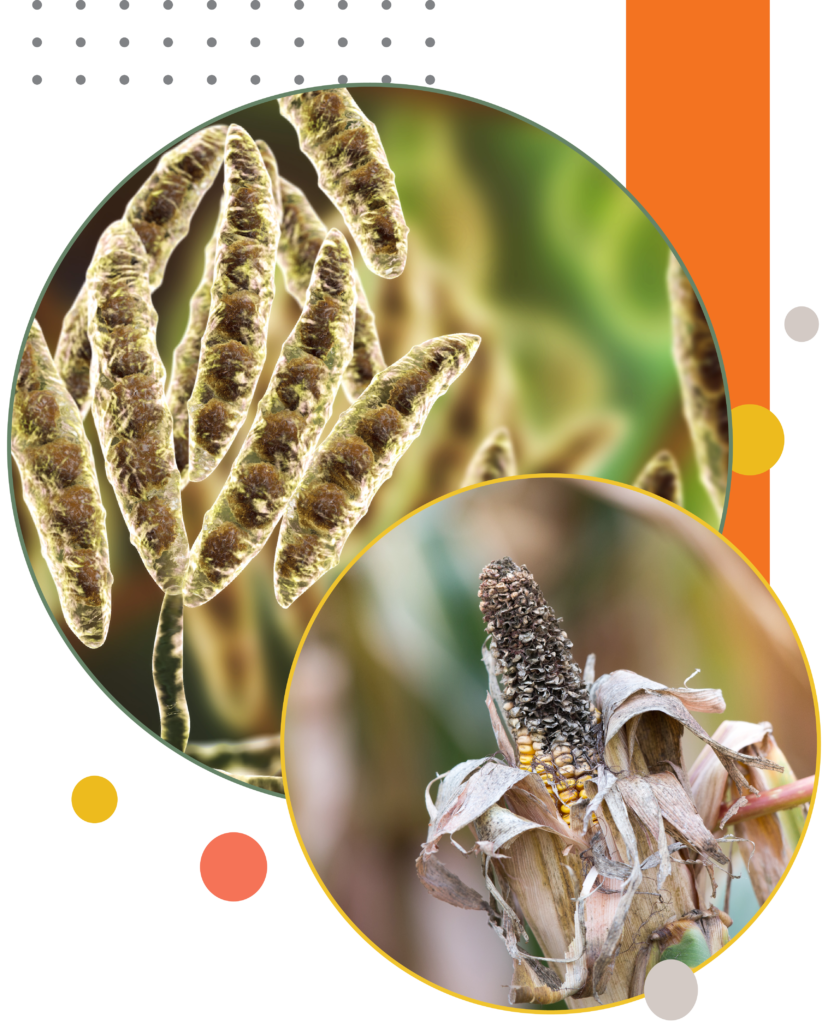
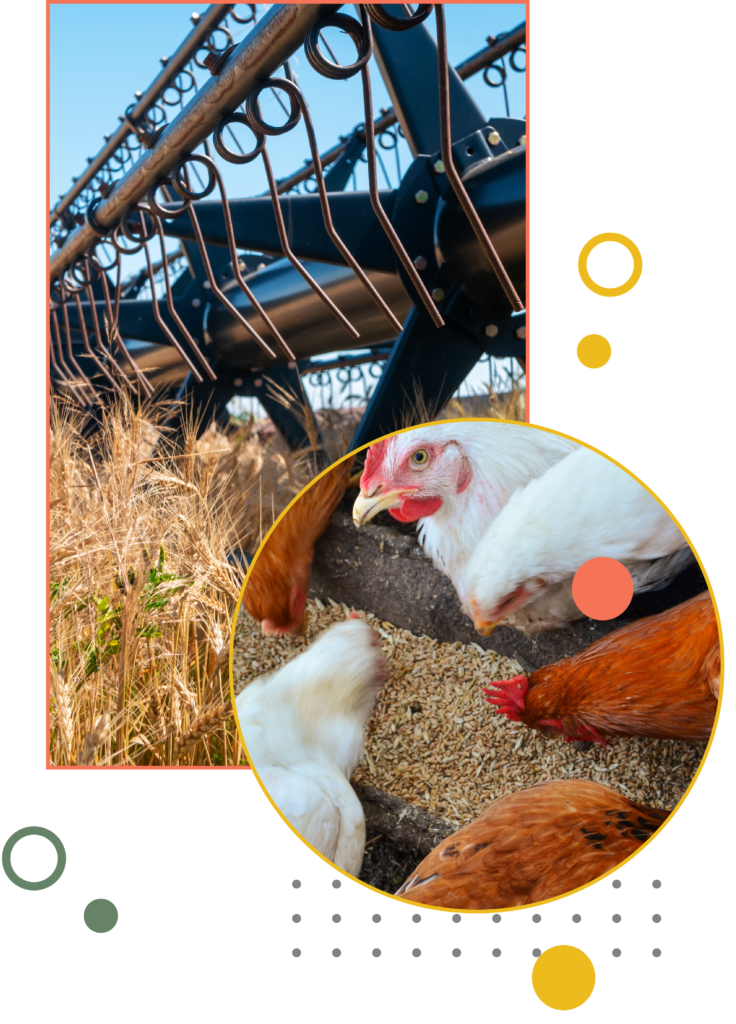
T-2 / HT-2 TOXIN ________
Advanced Detection for a Safer Food Chain
T-2 and HT-2 toxins are highly cytotoxic trichothecenes produced by Fusarium fungi, commonly affecting oats, barley, wheat and maize.
These toxins impair gut integrity, immune function and can cause hemorrhaging and reproductive issues in animals. Given their severe health implications and strict international limits, robust testing solutions are vital to uphold feed quality and safety standards.
ELISA Kits:
- Bio-Shield T-2/HT-2 8 | 8-min ELISA
- Bio-Shield T-2/HT-2 | High-sensitivity detection
- 1-Standard T-2/HT-2 | Cost-efficient one-standard ELISA
- Bio-Shield T-2 | Specific for T-2 toxin
Lateral Flow Tests:
- Symmetric T-2/HT-2 Green | 3-min test, aqueous extraction solution
- Quantum T-2/HT2 Green | Ultra-fast, cassette format
- Symmetric T2-HT2 ES | Organic extraction, for complex matrices
Ensure Mycotoxins Safety with ProGnosis Biotech
Industry-leading ELISA & Lateral Flow Tests for accurate, fast and eco-friendly mycotoxin detection.
FAQ
Mycotoxin Detection & Safety
Mycotoxin testing is essential because these toxic secondary metabolites, produced by fungi such as Aspergillus, Fusarium and Penicillium, can seriously impact animal health, food safety and agricultural economics. In livestock, ingestion of contaminated feed can cause immune suppression, liver damage, reproductive disorders and reduced growth performance. In humans, prolonged exposure is associated with chronic diseases, including cancer and kidney damage, depending on the type of mycotoxin.
Beyond health concerns, the presence of mycotoxins can lead to trade rejections, recalls and legal penalties due to non-compliance with strict international safety standards. Testing ensures that grains and feed meet regulatory thresholds, preventing economic losses and maintaining market access. By incorporating routine mycotoxin screening with validated ELISA and lateral flow tests, producers can safeguard both supply chain integrity and public health.
ELISA (Enzyme-Linked Immunosorbent Assay) tests are laboratory-based solutions designed for high sensitivity and quantitative accuracy. They are ideal for comprehensive mycotoxin analysis across a wide range of matrices, enabling precise measurements even at trace levels. With multiple kit options, including water- and methanol-based extractions, ELISA is well-suited for regulatory compliance and detailed risk assessments.
Lateral flow tests, on the other hand, are portable and optimized for fast, on-site decision-making. Designed for field applications or production line testing, these tests provide clear, semi-quantitative or quantitative results within minutes. ProGnosis Biotech’s advanced Symmetric and Quantum series elevate lateral flow tests to laboratory reliability, offering solutions that combine speed, simplicity and accuracy – ideal for early detection and daily monitoring in dynamic environments.
Regulatory limits for mycotoxins vary across regions and are defined by authorities such as the USDA (United States Department of Agriculture), EFSA (European Food Safety Authority) and Codex Alimentarius. For instance, the maximum allowable level of Aflatoxin B1 in food can range from as low as 2 ppb in the EU to 20 ppb in certain U.S. feed products, depending on the commodity and intended use. Zearalenone, DON, Fumonisins, Ochratoxin and T-2/HT-2 toxins are also strictly regulated, with separate limits for animal feed and human food, especially for vulnerable populations like infants.
These limits are based on scientific risk assessments, aiming to minimize long-term exposure and ensure food security. Compliance with these standards is mandatory for international trade and consumer protection. ProGnosis Biotech supports clients by providing validated test kits designed to align with regional and global regulatory thresholds, helping producers proactively manage risk and verify safety across diverse grain and feed types.

